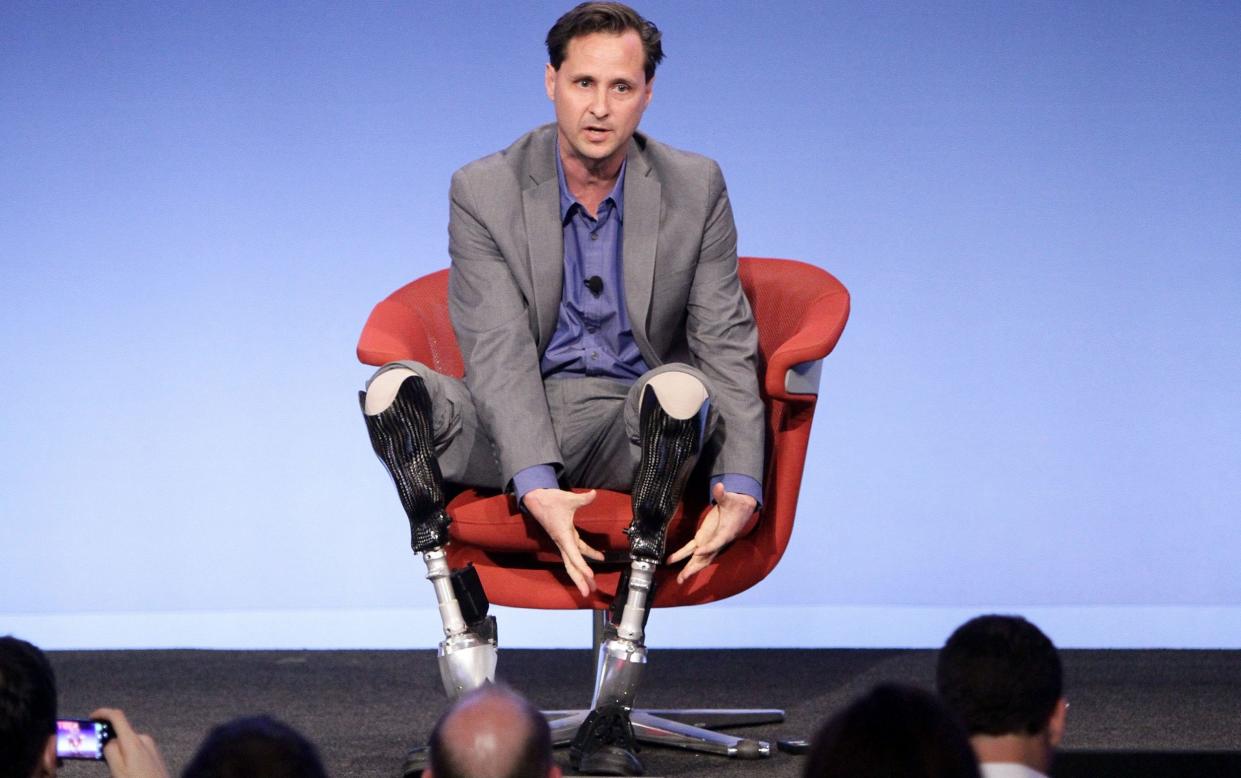Bionic leg allows amputees to walk naturally and at normal speed in world first

Amputees given new bionic legs can walk naturally and at a normal speed in a “miraculous” world-first scientific breakthrough.
Robotic legs built by scientists and engineers at Massachusetts Institute of Technology (MIT) use electrodes and a computer to decode the contractions of leg muscles in an amputated leg to turn “phantom” movements into real steps.
The amputee’s brain controls all the movements and allows them to walk normally without having to consciously focus on how to move their leg.
Data show people who use the bionic legs walk 41 per cent faster than those with traditional prosthetic legs, and at a speed equivalent to people with two intact limbs.
Prosthesis under full neural modulation
Scientists recruited seven patients with one leg amputated below the knee for an operation where pairs of muscles that move a leg are connected, known as agonist-antagonist myoneural interface (AMI).
These people received the prosthetic robotic leg and were found to walk easier, quicker and more naturally compared to seven single-leg below-knee amputees who had the traditional operations and prostheses.
“We found a marked improvement in each patient’s ability with AMI amputation to walk at normal speed, to manoeuvre obstacles as well as to walk up and down steps and slopes,” said study author Prof Hugh Herr at MIT.
“This is the first prosthetic study in history that shows a leg prosthesis under full neural modulation where a natural or biomimetic gait emerges
“No previous study was able to show this level of brain control that produces a natural gait where the human nervous system is controlling the movement, not a robotic algorithm.”
Only around 60 people in the world have had an AMI procedure, which can be done during amputation or as a revisional procedure, however scientists say the improved locomotion abilities could see it soon become the standard of care for amputations going forwards.
“Muscles were connected in natural pairs,” Prof Herr explained. “When a person thinks and moves their phantom limb, they feel the limb moving with natural dynamics.
“When they do that, those physical muscles move naturally as they once did when the person had an intact limb.
“We put electrodes adjacent to each muscle and a small computer in the robot decodes those signals enabling natural movements of the robotic prosthesis.
“What happens then is quite miraculous – the patients that have this interface are able to move really without thinking about it, just like if you have intact biological limbs.
“Even though their limb is made of titanium and silicone, the limb feels natural and moves naturally without conscious thought.”
‘A critical step forward’
Prof Herr, himself a double amputee who lost both his legs from frostbite after a climbing accident in 1982, is now considering undergoing a revision AMI procedure to make his limbs suitable for the bionic legs.
“Absolutely, I am thinking of doing that for both of my legs in the coming years,” he said.
The key breakthrough, the scientists say, is that the device allows the brain to control all the movements of the leg creating a gait identical to that of able-bodied individuals.
“This study is a critical step forward, pun intended, towards that long term objective of full neuronal control and embodiment,” Prof Herr said.
The scientists now hope to improve the electrodes, which are currently non-invasive and sit next to the muscles, to make the leg more accurate and responsive.
There are investigations underway to also apply the findings, published in Nature Medicine, to arm amputees and people with motor paralysis conditions.
“The brain was controlling the position of the robot, how it pushes off the ground and the force – the totality of the dynamic for the first time in history,” said Prof Herr who has filed for a patent on the technology.
“It won’t be very long before this is available for clinical care.”

 Yahoo News
Yahoo News 
